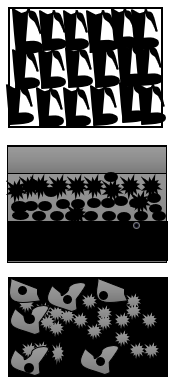This set of Bioseparation Engineering Multiple Choice Questions & Answers (MCQs) focuses on “Membrane Separation – Set 2”.
1. In terms of structural view the membrane is of two types.
a) True
b) False
View Answer
Explanation: The two types of the membranes in terms of structural view are isotropic and anisotropic.
2. Isotropic membrane is also known as ____________
a) Asymmetric
b) Anisotropic
c) Symmetric
d) Membrane
View Answer
Explanation: The isotropic membranes are symmetric in nature and have identical composition throughout the membrane.
3. Constant structural composition is found in ___________
a) pressure driven membrane
b) diffusion driven
c) asymmetric
d) symmetric
View Answer
Explanation: The symmetric membrane is a type of membrane based on structural point of view and hence it has similar and almost constant composition of structure as well the morphology throughout the positions within the membrane.
4. Asymmetric membrane is also known as ___________
a) Isotropic
b) Anisotropic
c) Pressure driven
d) Diffusion driven
View Answer
Explanation: The symmetric membrane are called isotropic membrane, pressure driven and diffusion driven are the methods of separation therefore, the correct answer is isotropic membrane.
5. An anisotropic membrane is composed of ___________
a) two structural planes
b) one structural plane
c) non-structural plane
d) simple plane
View Answer
Explanation: An asymmetric membrane requires two or more than two structural planes that have non-identical morphology as well as composition.
6. In terms of morphology, membranes are of ___________
a) four types
b) three types
c) two types
d) more than one type
View Answer
Explanation: On the basis of morphology, membranes are of two types and they are porous membrane and dense membrane.
7. Porous membranes have ___________
a) large pores
b) normal pores
c) very large pores
d) tiny pores
View Answer
Explanation: The pores in the porous membranes are tiny so that the particles are separated selectively and not all the large particles moves with the feed.
8. Dense membranes have ___________
a) no pores
b) large pores
c) small pores
d) tiny pores
View Answer
Explanation: Dense membranes do not have any pores, the structure of the membrane is thick and it allows the selective particles to pass through the membrane for separation.
9. The dense membrane separates the particles on the basis of ___________
a) diffusion
b) partition
c) partition-diffusion-partition
d) diffusion-partition
View Answer
Explanation: The dense membrane do not have pores so they need a specific mechanism to transport the solute or the solvent and the mechanism for the transportation is partition-diffusion-partition.
10. Membranes are available in different forms and they are of __________ types.
a) 2
b) 1
c) 3
d) 4
View Answer
Explanation: The three different types of membrane available are flat sheet membrane, hollow fiber membrane and tubular membrane.
11. Which form of structural membrane is a type of dense membrane?
a) Porous
b) Symmetric
c) Asymmetric
d) Hollow
View Answer
Explanation: The symmetric membrane is of two types and they are dense as well as porous membrane. These have constant components as the part of the membrane.
12. Porous membrane can be the part of asymmetric membrane.
a) True
b) False
View Answer
Explanation: Porous membrane when used in combination with other membrane then it can be considered as asymmetric membrane else it is symmetric membrane.
13. A dense membrane when fused with porous membrane is part of __________
a) symmetric
b) dense
c) flat sheet
d) asymmetric
View Answer
Explanation: When the combination of dense and porous are used then it is not symmetrical in terms of structure therefore they are asymmetrical.
14. What is the significance of the given 3 figures?

a) 1. Porous 2. Microporous 3. Isoporous
b) 1. Microporous 2. Porous 3. Isoporous
c) 1. Isoporous 2. Porous 3. Microporous
d) 1. Isoporous 2. Isoporous 3. Isoporous
View Answer
Explanation: The first image shows big pores hence we can say they are just porous, the second image is a bit clumsy in terms of pores and they look tiny so they are microporous and last image is mixture of both the porous as well as microporous hence they are isoporous.
15. When porous membrane is in combination with other porous membrane, they are ___________
a) dense
b) symmetric
c) isotropic
d) anisotropic
View Answer
Explanation: The combination of any porous membrane is the type of asymmetric membrane and the asymmetric membrane are also known as anisotropic membrane.
Sanfoundry Global Education & Learning Series – Bioseparation Engineering.
To practice all areas of Bioseparation Engineering, here is complete set of 1000+ Multiple Choice Questions and Answers.
If you find a mistake in question / option / answer, kindly take a screenshot and email to [email protected]
